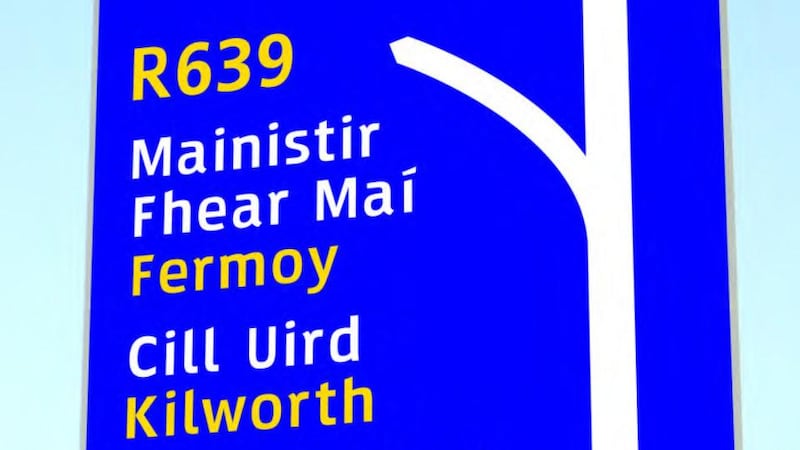The Department of Transport has asked the NRA to trial run newly-designed road signs that would give the Irish language parity with English on the country’s roads for the first time in the history of the State.
The new design, which uses the test ‘Turas’ typeface and colour differentiation to highlight both languages, is based on recommendations outlined in a study commissioned by Irish language organisation Conradh na Gaeilge.
Conducted by Royal Society of Arts Fellow Garrett Reil, the study was aimed at discovering more efficient and safer means of delivering information to drivers as well as delivering the promise of equal status for Irish.

The existing system employs the British Transport typeface which was designed by graphic designers Jock Kinneir and Margaret Calvert to standardise the UK road network in the 1960s. Considered a design classic, the typeface was later adopted in Ireland. However, the adopted Irish version saw the introduction of italics for Irish place names, "directly" thwarting the design intent of the original Transport typeface, according to the report.
It found that not only does current Irish road sign design not follow best international practice but that Irish typographic characters are poorly drawn - rendering place names in Irish less visible than in English.
The report also identifies problems faced by older drivers through a phenomenon known as halation where light cast upon reflective lettering causes letter shapes to obscure thereby impairing the ability of the road user to read the sign.
Citing the iconic Transport typeface and how it has become synonymous not only with the British transport system but is also is part of “the look of Britain”, the report emphasises the cultural impact road sign design can have on society and how it can unintentionally become a visible expression of national identity.
News of the possible change to the country's road sign design first emerged on social media yesterday afternoon when Mr Varadkar used Twitter to gauge public reaction to the proposition.
Tweeting an image of a prototype sign depicted alongside a sign currently located along the M8 motorway in Cork, Mr Varadkar said: “Considering a trial of a new road sign. Brighter agus gaeilge nios feiceali. Cad a ceapann sibh?”
Conradh na Gaeilge discussed the contents of the report with Mr Varadkar on Tuesday and Mr Varadkar subsequently asked the NRA to consider trialling it on a pilot basis.
“I like the new design and I do think there should be parity between Irish and English where it matters, like road signs that people see every day,” Mr Varadkar said yesterday.
“But it’s a bit like an election poster: it’s only when you put it on a road and drive past that you really know whether it works.
Conradh na Gaeilge general secretary Julian de Spáinn welcomed the minister’s response and described this week’s meeting at the Department of Transport as “very positive”.
The new signs, if adopted, will not incur additional cost to the State as they will only be introduced to replace decommissioned signs or when new signs need to be put up.
The introduction of a new design would also require legislative change as existing road sign legislation stipulates that road signs must give priority to English place names.

